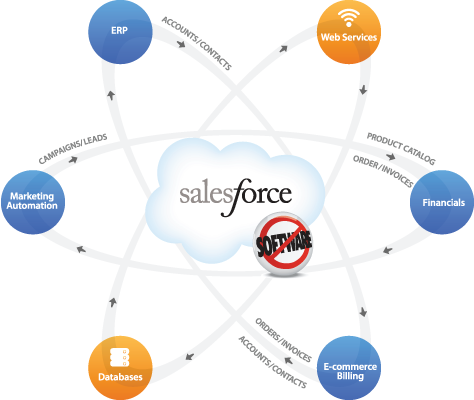Every couple of years there seems to a new marketing darling, innovated by big brands, that will change the face of marketing forever. Today’s belle of the ball is real-time marketing.
The definition of “real-time marketing” seems be similar across the board amongst the major marketing media outlets, big brands, and the agencies that serve them both.
In short, they portray real-time marketing as the practice of brands engaging their audience via content, advertising, and product placement that is relevant to a specific current event or cultural happening. The content is most often in the form of a “meme” or graphic advertisement shared through social media channels.
Some brands have had great success with their real time marketing efforts, with thousands of consumers sharing their content. While others are missing the boat. Resulting in the recent barrage of media coverage, and the rise of pundits on the subject.
The Initial Problem with Any Marketing Craze
The beginning of any marketing craze is fraught with insta-experts that rush to be a thought-leader and resource on the subject. You see this often when new technologies launch, and within days experts are already providing in-depth advice and best practices for success.
Thus, definitions and best practices start to form well before most businesses jump in. All based on the successes (and failures) of a few big brands that can afford such marketing experimentation. With most experts likely not having executed on the strategy themselves at all.
There is nothing inherently wrong with this trend. People are interested in learning whatever they can, and writers do their best to provide valuable advice with the limited data available.
The marketing strategy eventually starts truly taking shape as everyday businesses start putting those early ideas into practice. They discover what actually works for them in driving business value. Practical use cases arise, and the best practices of yesterday often turn into the myths and misconceptions of today.
A similar trend is occurring with the term “real-time marketing”.
Before we go about definitively defining what real-time marketing is all about, let’s take the time to break it down, review some history, and get a gauge for what most marketers really think about the term.
The Definition of Real-Time Marketing Over the Years
Real-time marketing may seem like a brand new marketing phenomena, but that is only really the case in it’s current media defined definition.
The first burst of discussion for the term “real-time marketing” happened at the beginning of 2005. The Google Trends graph below can go as far back as 2004, but 2005 is when the term first comes up.
“real-time marketing”
The first thought that came to my mind to explain the initial big spike in conversations around real-time marketing was the emergence of social media marketing happening around this time. Social media marketing was the first major channel for brands to monitor and engage in real-time conversations after all.
But, when I add “social media marketing” (in red below) into Google Trends next to the term “real-time marketing” (still in blue), there isn’t much of a correlation. In fact, “real-time marketing” sprung up in marketing nomenclature before “social media marketing” was starting to be used heavily in 2006.
“real-time marketing” “social media marketing”
So, if there was talk about real-time marketing well before social media marketing even prominently existed, then what could it have been talking about?
Put today’s popular media definition of real-time marketing aside, and you would probably think of real time marketing as marketing that happens in real-time. That is, instantly. Not potentially hours or days later on social media.
What topic of discussion sprung up in 2005 that fits this criteria? Web personalization is what.
As shown below, there is strong correlation between the (first) rise of real-time marketing and the rise of the term “web personalization”.
“real-time marketing” “web personalization”
The chart shows how both real-time marketing and web personalization decreased in hype quickly after 2005, with web personalization continuing to decrease over time for the most part, and real-time marketing gaining it’s second wind in 2013 under the definition promoted today.
Why didn’t web personalization and real-time marketing remain synonymous in the media?
A few thoughts that could explain…
Web personalization in 2005 was mostly hype.
While big brands were starting to offer personalized website experiences, powerful software was not yet available for the mass market to utilize. The idea of marketing to website users in real-time was a hot topic. There just wasn’t a way for most of the market to put the idea into practice without serious technical resources or by spending enterprise-level dollars on a solution that wasn’t even all that powerful yet (or actually real-time).
“Real-time analytics” entered the fray.
As “web personalization” started to lose it’s popularity in the media, “real-time analytics” started to gain popularity. Real-time analytics was a big step in the right direction in helping marketers get data quicker so they can act on data quicker.

“real-time marketing” “web personalization” “real-time analytics”
- Real-time analytics providers started popping up, at reasonable prices, and with well-documented implementation. Once again, people used the term “real-time marketing” as a way to describe this new technology. When Google rolled out their real-time analytics in 2011, and as real-time A/B testing became more and more popular, real-time analytics earned a name of it’s own. “Real-time marketing” was again up for grabs.
David Meerman Scott wrote the book, “Real-Time Marketing and PR”.
The other points I made above at least show correlation data with Google Trends. This point is more of a hunch. The book I continue to see quoted in articles talking about real-time marketing today is “Real-Time Marketing & PR” by David Meerman Scott. First published in 2011.
- From my research, this book is the first time real-time marketing was thoroughly discussed in the context of the definition widely used today in the media.
The book showcases multiple case studies from brands that quickly react to external current events and cultural happenings, finding a way to inject their brand into the conversation. It’s possible that as this practice started to become more prevalent, this book was the best resource to reference to help explain the phenomena, and learn from.
David Meerman Scott isn’t the originating reason why brands started marketing this way, but he may be a huge influence as to why this practice is being called “real-time marketing”.
What Marketers Actually Think Real-Time Marketing Is
While real-time marketing has been getting a ton of press as of late with a very specific definition, the meaning of real-time marketing in the mind’s of most marketers today is actually very different than what is being promoted. Even with big brand marketers.
Neolane and the Direct Marketing Association recently released a study of 235 North American marketers. 16% of the participants work for an enterprise with over $1Billion in revenue, with 53% from companies with under $99 Million in yearly revenue.
Here’s what they think real-time marketing means.
- The majority of the participants (43%) think of real-time marketing as “dynamic, personalized content delivered across channels.”
- 64% of participants believe real-time marketing revolves around some kind of dynamic personalization.
- Only 23% believe real-time marketing is about making quick responses to mainstream events or injecting your business in social media conversations.
The study further breaks down the concerns marketers have with real-time marketing and where real-time marketing really matters.
- Only 49% of the participants believe providing real-time marketing within social media channels is highly important.
- While 69% believe that providing dynamic, personalized content is highly important on the web channel.
While the term “real-time marketing” has had multiple different meanings over time in the media, marketers still think of web personalization for the most part.
Marketers are mostly concerned with how they can increase business metrics like customer retention (43% of respondents say this is their biggest marketing challenge, 3rd in votes) and conversion rates (57%, 2nd in votes). Not how they can improve brand sentiment, or how they can inject themselves in external, cultural conversations.
It just so happens they believe real-time marketing is the potential cure to these challenges. Stating that real-time marketing’s greatest benefits are “marketing effectiveness” (higher conversion), and customer satisfaction and retention.
Why then aren’t marketers implementing dynamic, personalized content in droves?
Why is “real-time marketing” being used to describe clever content creation and product placement, when most marketers believe real-time marketing actually means marketing to your audience in real-time with dynamically personalized content and offers?
It’s the same reason why the term “web personalization” initially started to decline in the first place.
The media and the majority of the market have yet to discover a tangible web personalization solution that most marketers can easily start using.
Web personalization solutions have historically been difficult to use, priced only for the enterprise, and lack in capability and power. Many may personalize content for website visitors, but only on the next visit, not in real-time while the visitor is engaged on the website. Others only personalize basic elements on a marketing website, but do not allow personalization within modern Software-as-a-Service products or secure consumer web applications.
What use is writing about web personalization as “real-time marketing” if most businesses still see personalization as a major challenge (getting 60% of the vote in the aforementioned study as their organization’s top marketing challenge) and there not being a tangible solution available?
It’s time web personalization gets an upgrade so that marketers from businesses of all sizes can reap the benefits of (the real) real-time marketing, and prompt the press to reconsider their recently popular definition.
Well, it has…
Introducing Real-Time Web Personalization, True Real-Time Marketing
Evergage has created the first and only real-time web personalization platform that covers every point that marketers have been waiting for in a web personalization solution:
- Real-time analytics. Tracks website visitors, signed-in users, and entire accounts in real-time. A complete view of customer engagement in the past and the now.
- Real-time response. That means responding to who people are, what they have done with your business and what they are doing in the moment, instantly. Finally, making big data actionable in real-time.
- Captures attention and drives action. Personalize inline content, and trigger dynamic on site messages such as header bars, popups, tooltips, and task lists. All based on user behavior.
- Ridiculously easy implementation. The Evergage point-and-click Visual Editor allows anyone to use personalize their site or web app in minutes, without coding.
- Works throughout the customer lifecycle. Nurture anonymous website visitors to free trials, convert free trials to paying customers, guide customers to success, and create brand advocate.
Some could consider this blog post as real-time marketing. We saw the overwhelming conversation about real-time marketing and felt compelled to share our take on the subject, while the conversation was popular in the media. The term is trending, and we saw an opportunity to inject our brand into the conversation.
But, we don’t believe that is real-time marketing. We believe that is simply opportunistic content marketing and advertising. We believe that truly relevant, compelling engagement happens when you take into account the full picture of who someone is (past and current behavior) specifically with your business (not with what’s currently on TV). That is real-time marketing.
















